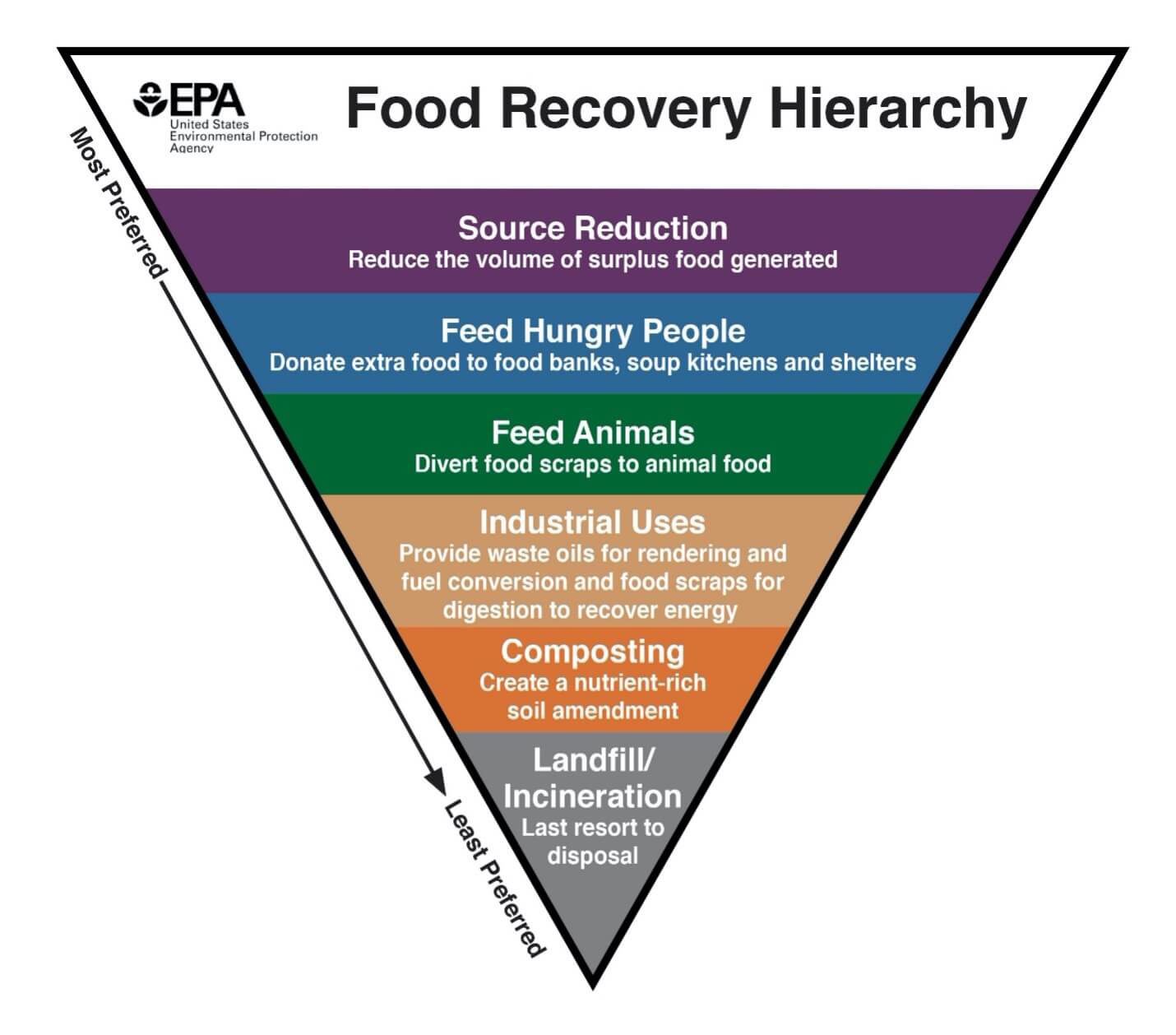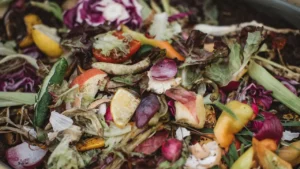What is Organics Recycling, and How Can It Benefit Your Business?
Organics recycling is all about removing organic waste from the waste stream. Rather than sending organic material to landfills, organics recycling aims to recycle and reuse that waste instead.
Essentially, any waste that was once alive is eligible for organics recycling and organics composting. This includes food waste, egg cartons, coffee grounds (and filters), tea bags, food-soiled products, and more. It also includes green waste, like grass, wood, and plants.
While composting can be done on an individual level, there are many reasons why universities, municipalities, and businesses should consider implementing a food waste and organics recycling initiative too.
The Importance and Benefits of Organics Recycling
According to the EPA, Americans toss out about 63 million tons of food waste every year. In fact, more food reaches our landfills than any other material and accounts for 24% of our landfill waste.
Food waste is a huge problem because when we waste food, we’re also wasting the water and energy it took to cultivate, harvest, transport, and package it. Plus, when food goes to the landfill, it produces methane (a harmful greenhouse gas).
Additionally, more than 38 million Americans are food insecure. This average only worsened during the pandemic when more than 60 million people turned to food banks (almost 20% of the country). These staggering statistics make food waste seem even more egregious.
Municipalities, universities, and businesses have the ability to make a significant dent in the problem with an organics recycling program.
Doing so not only helps the environment and community, but it also has a positive impact on your reputation and can improve ESG scores (if applicable). When you donate food, there are potential tax benefits as well.
Organics Recycling Best Practices
When it comes to organics recycling, many people assume that it simply means organics composting. While composting is part of the equation, it’s not the whole story.
The EPA has created a Food Recovery Hierarchy that prioritizes action to prevent and divert food waste. It’s best practice to start at the top levels because they produce the highest benefit for society and the environment, and then work your way down.

Level One: Source Reduction
Source reduction is all about ordering the right amount of food. Often, businesses and universities order more inventory than they actually need.
Restaurants can modify their menus, reevaluate their inventory, clean up their practices, and get rid of garnishes that people don’t eat. For colleges, getting rid of trays in the cafeteria can eliminate a lot of food waste.
To figure out how much food your college, municipality, or business wastes, consider getting a waste audit to see where you can reduce the problem from the source.
Level Two: Feed Hungry People
If you find that you’re tossing out a lot of edible and unspoiled food, consider partnering with local food banks, food pantries, and food rescue programs. Donating safe food waste is a terrific option for getting rid of food sustainably.
Level Three: Feed Animals
If donating food to people doesn’t make sense, consider donating your scraps to animals instead. You can partner with local farms, animal shelters, and other organizations to pass the food along.
Just make sure to check your local and state regulations before doing this because some states don’t allow food donation for animals, and others regulate what you can and can’t donate.
Level Four: Industrial Uses (Anaerobic Digestion)
Anaerobic digestion is when microorganisms break down organic materials to produce biogas and a soil amendment, both of which are very useful and have many industrial uses.
Level Five: Organics Composting
Organics composting is simply the process of turning your food waste into compost to nourish and feed the soil. Composting helps improve soils, improve water quality, and grow the next generation of crops.
Level Six: Incineration/Landfills
Once you’ve exhausted all your other options, then (and only then) should you send whatever is left over to incinerators and landfills. If you’ve done all the other levels first, you shouldn’t have much left to send away.
Getting Started with Organics Recycling
There’s a reason that everyone doesn’t already have an organics recycling program in place – it can be complicated and costly to set up and manage on your own. Establishing partnerships with food banks, farms, anaerobic digestion facilities, and composting facilities takes a lot of dedication and ongoing work.
Here at CheckSammy, we take the hassle out of organics recycling. Not only do we have the only patented organics recycling system in the world, but we also work with you to create a customized, on-demand program that follows the EPA’s Food Recovery Hierarchy.
Our extensive SmartFLEET across North America makes same-day organics composting possible, and our technology and infrastructure allow us to create a full-scope organics recycling plan for your community, college, or business.
Contact us today to see what an organics recycling program could look like for you.
See Our Services
Create a custom solution to meet your waste and sustainability goals. Contact us today!
Continue reading
Dive deeper into the CheckSammy Blog by reading one of our posts below
Feeling the Pain of Higher Resident Turnover? Apartment Junk Removal Can Help
If you’re a property manager, you’ve probably had a significant increase in tenant turnover over the last couple of years. So it’s no wonder apartment junk removal may be top of mind for you right now. There are several reasons for this shift. For one, the housing market is on fire right now. In 2020 […]
Read MoreSetting Up a Community E-waste Recycling Program
E-waste is the fastest-growing municipal waste stream according to the EPA, yet e-waste recycling isn’t keeping pace. In fact, only 12.5% of all e-waste is recycled, reports the EPA. Starting a community e-waste recycling program is a terrific way to ensure hazardous e-waste, like lithium-ion batteries, doesn’t end up in your community’s landfill. Creating an […]
Read MoreWaste Management’s Role in the Circular Economy
Establishing a waste management program for your business or community is one of the best ways you can contribute to the circular economy. Here’s everything you need to know about waste management’s role in the circular economy (and how to get involved). What Is the Circular Economy? Our current economic model is all about taking […]
Read More5 Reasons to Consider a Textile Recycling Program for Your Organization
Americans sent more than 17 million tons of textiles to landfills in 2018, a volume that is only increasing every year, reports the Environmental Protection Agency. When you think about the fact that it can take over 200 years for textiles to decompose, it’s easy to grasp how large textile waste’s contribution is to the […]
Read More8 Benefits of Environmentally Friendly Power Washing Services
If you’re into maintaining the curb appeal of your business or home, then you’ve probably heard of pressure washing. Pressure cleaning involves using high-pressure water spray to remove grime, mold, dust, paint, mud, and other junk from objects or surfaces. Many people worry that pressure washing isn’t good for the environment, but this couldn’t be […]
Read MoreWhy Our Customers Love Our Full-Service Junk Removal
If you’re looking for full-service junk removal services, you’ve come to the right place. CheckSammy is a one-stop shop for all your junk removal and sustainability needs. From our affordability, simplicity, and unrivaled turnaround times to our innovative sustainability solutions and patented technology and data, it’s clear why some of North America’s biggest companies choose […]
Read MoreTips for a Stress-Free Move From An Eco-Friendly Junk Removal Company
What does an eco-friendly junk removal company know about moving? Quite a lot, actually. Moving can be an especially chaotic time. You have to pack everything up, get rid of unwanted items, clean your property, load everything up, and move your things to your new location. That doesn’t even include the unpacking and resettling period. […]
Read MoreCollege Junk Removal Tips for Student Move-In Day
As the new school year gears up, colleges across the country are looking for ways to clean up their campuses before the new year begins, and many of them want to do so sustainably. College junk removal isn’t easy, though, especially around move-in week—and when trying to do so sustainably. As students move in and […]
Read More8 Items Hospitality Businesses May Not Know They Can Recycle
One hotel guest produces 2.5 pounds of trash every single day. Just a single hotel room produces around one cubic yard of waste each month, which totals 200 gallons of waste per room every month. Most of this waste goes straight to the landfill, even though research shows that up to 60% of it is […]
Read More











